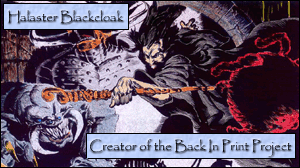"Aging 3-30 years is done by life expectancy:
1) 3 years for half-orcs
2) 4 years for humans
3) 7 years for halflings
4) 12 years for half-elves
5) 20 years for gnomes
6) 25 years for dwarves
7) 30 years for elves"
I like that! If we apply that to aging from spells, ghosts, etc, it makes those spells much more perilous for the demi-humans who would normally ignore the effect (what is 5 years to an elf?), and it makes ghosts that much more dangerous. Equally dangerous to an elf as to a human. I started using this relative aging awhile back and I like it!


